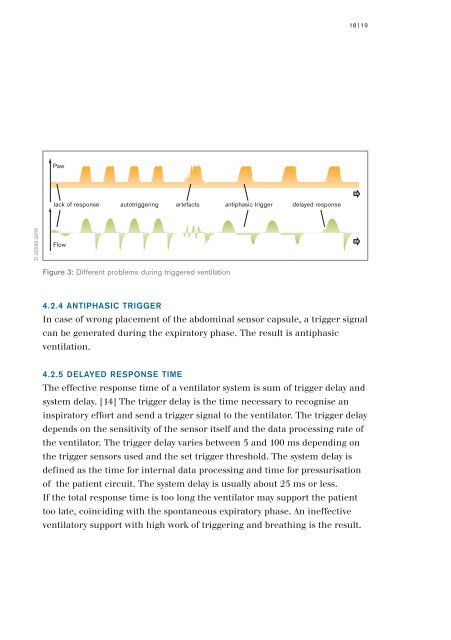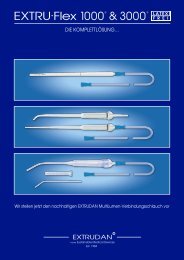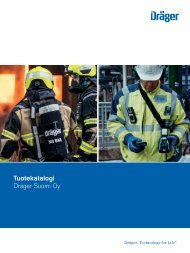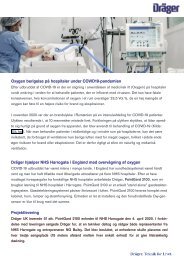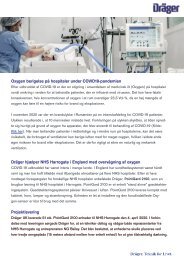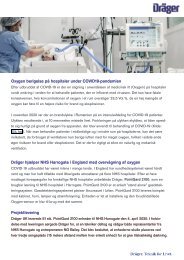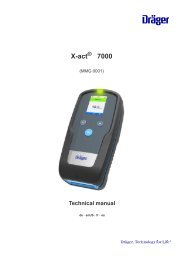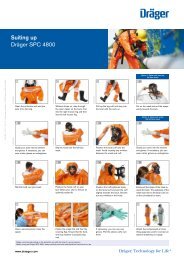Pressure Support Ventilation - A New Triggered Venilation Mode for Neonates
Booklet about pressure support ventilation written by Jean Christophe Roze and Thomas Krueger.
Booklet about pressure support ventilation written by Jean Christophe Roze and Thomas Krueger.
You also want an ePaper? Increase the reach of your titles
YUMPU automatically turns print PDFs into web optimized ePapers that Google loves.
18|19<br />
Paw<br />
t<br />
lack of response autotriggering artefacts antiphasic trigger delayed response<br />
D-22595-2010<br />
Flow<br />
Figure 3: Different problems during triggered ventilation<br />
t<br />
4.2.4 ANTIPHASIC TRIGGER<br />
In case of wrong placement of the abdominal sensor capsule, a trigger signal<br />
can be generated during the expiratory phase. The result is antiphasic<br />
ventilation.<br />
4.2.5 DELAYED RESPONSE TIME<br />
The effective response time of a ventilator system is sum of trigger delay and<br />
system delay. [14] The trigger delay is the time necessary to recognise an<br />
inspiratory ef<strong>for</strong>t and send a trigger signal to the ventilator. The trigger delay<br />
depends on the sensitivity of the sensor itself and the data processing rate of<br />
the ventilator. The trigger delay varies between 5 and 100 ms depending on<br />
the trigger sensors used and the set trigger threshold. The system delay is<br />
defined as the time <strong>for</strong> internal data processing and time <strong>for</strong> pressurisation<br />
of the patient circuit. The system delay is usually about 25 ms or less.<br />
If the total response time is too long the ventilator may support the patient<br />
too late, coinciding with the spontaneous expiratory phase. An ineffective<br />
ventilatory support with high work of triggering and breathing is the result.


